Yellow Delicious Apple Tree
- June 9, 2023
- 0 comment
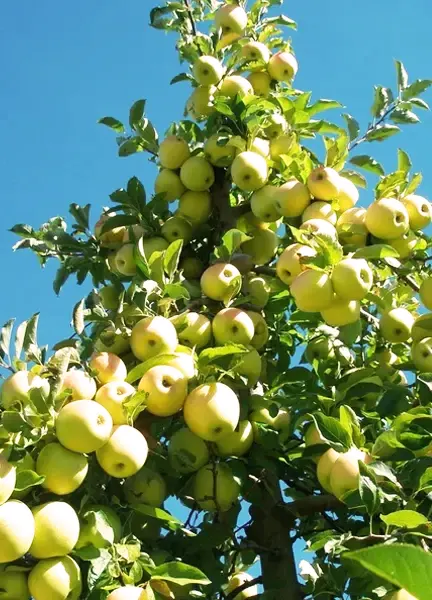
Common Name & Botanical Name
Commonly known as the Yellow Delicious Apple, it is scientifically referred to as Malus domestica ‘Golden Delicious.‘ This variety is often mistaken for its close relative, the Red Delicious Apple, due to their similar names.
Lumber
The wood is light to medium in weight, with a fine to medium texture. It can range in color from light yellowish-brown to a reddish hue and often features attractive grain patterns. While apple lumber is not commonly used on a large scale due to limited availability and smaller tree size, it can be used for specialty woodworking projects, crafts, and decorative items. Its unique appearance and association with the fruit-bearing tree make it appealing to those seeking distinctive wood options.
Read more about Apple Lumber
Interesting Facts

Did you know that the Yellow Delicious Apple was almost named something else? The Stark Brothers Nurseries, who bought the rights to the tree, initially gave it the name “Mullins Yellow Seedling” in honor of the man who discovered it. However, after experiencing the exceptional taste and texture of the fruit, they decided that such a delightful apple needed a name that reflected its remarkable qualities. Thus, the apple was renamed “Golden Delicious” in 1916, and it has been celebrated under this moniker ever since. This name change underlines the captivating sweetness and flavor that set the Yellow Delicious Apple apart, making it one of the most favored apple varieties worldwide. Interestingly, despite its name, it is not closely related to the Red Delicious apple; it’s an entirely different variety that stands on its own merits.
Family & Plant Type
The Yellow Delicious Apple is a member of the Rosaceae family, the same family that boasts over 4,800 species including cherries, peaches, pears, and roses. It’s a deciduous tree which means it loses its leaves seasonally, generally in the fall.
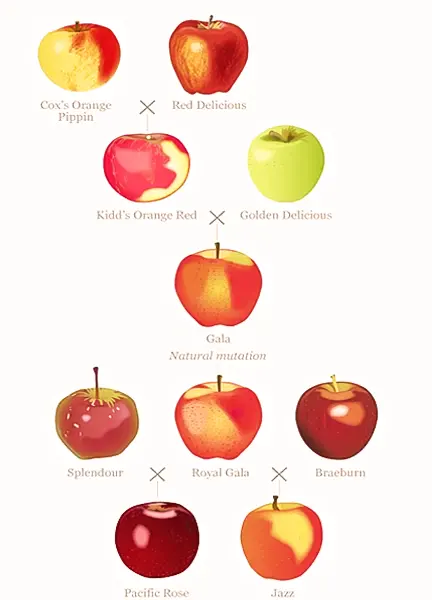

Mature Size and Growth Rate
Yellow Delicious Apple trees can reach a mature size of 10 to 25 feet tall and 10 to 20 feet wide depending on the rootstock and growing conditions. This tree grows at a fast rate, with height increases of more than 24″ per year.
Soil and Sun Preference
These apple trees prefer well-draining soil and a location that receives full sun for at least six hours each day.


Hardiness Zones
The hardiness zones for Yellow Delicious Apple trees are typically Zones 4-9. Hardiness zones are a system developed by the United States Department of Agriculture (USDA) to determine the suitability of various plants for specific regions based on their ability to withstand the average annual minimum temperatures. In Zone 4, the average minimum winter temperature ranges from -30 to -20 degrees Fahrenheit (-34 to -29 degrees Celsius), while in Zone 9, the average minimum winter temperature ranges from 20 to 30 degrees Fahrenheit (-7 to -1 degrees Celsius).
Varieties
The Yellow Delicious Apple, although not existing in distinct varieties itself, has played a vital role as a parent apple in the creation of numerous other apple varieties. One of its notable offspring is the well-liked Gala apple, known for its sweet and crisp taste. Another variety resulting from its parentage is the Crispin apple, which offers a delightful balance of sweetness and tartness. Through its influence as a parent, the Yellow Delicious Apple has contributed to the diversity and popularity of apple choices available to consumers today.


Common Pests & Diseases
The Yellow Delicious Apple is prone to common apple pests like codling moth, apple maggot, and aphids. Diseases can include apple scab, powdery mildew, and fire blight.
Edibility
The Yellow Delicious Apple is not just edible but delectably sweet. It’s enjoyed fresh, in salads, and is also a favored variety for pies, sauces, and cider.


Attributes
The tree blooms with pretty pink buds that open into fragrant white flowers in spring. Come fall, it bears an abundant crop of large, golden-yellow apples with a sweet, slightly tangy flavor, making it a favorite for fresh eating and cooking.
Wildlife Value
Yellow Delicious Apple trees provide significant value to wildlife. They offer nourishment to various insects during flowering, and birds and mammals often feast on the fallen fruit.


Care
The upkeep of these trees primarily involves an annual pruning routine, aiming to preserve an open, balanced canopy. Regular scrutiny is another crucial aspect of tree care, serving to promptly identify any signs of pests. Additionally, this diligent observation helps detect diseases early on, allowing for swift and effective treatment.
Characteristics and Invasive Nature
The Yellow Delicious is characterized by a non-invasive nature that allows it to coexist harmoniously within diverse ecosystems without overtaking native species. In addition to this, its moderate size adds to its appeal as it doesn’t overwhelm smaller spaces, making it a suitable choice for home gardens and small-scale orchards. This manageable growth ensures that it doesn’t overcrowd other plants or demand excessive resources, contributing to a balanced and sustainable garden environment. Thus, the Yellow Delicious strikes a perfect balance between providing aesthetic appeal, manageable growth, and eco-friendly characteristics, making it an ideal selection for those looking to enrich their garden or orchard with fruitful and robust tree species.


Benefits and Disadvantages
The benefits of the Yellow Delicious Apple are manifold. It’s a highly productive tree with versatile fruit that stores well, and it exhibits good disease resistance. However, it can be susceptible to common apple pests, and the fruit tends to bruise easily.
Habitat Requirements
These trees require a chilling period during winter to produce fruit effectively, hence their suitability for cooler climates. They also require pollinators, so be sure to have a compatible apple variety nearby.


Pruning and Propagating
Pruning and propagating are integral to the successful growth and longevity of a tree. The best time for pruning is in the late winter or early spring, just before the onset of new growth. This timing ensures that the tree is at its most dormant state, minimizing stress and potential disease exposure while preparing it for robust growth in the coming season. On the other hand, propagation, the process of creating new trees, is commonly accomplished through grafting. Grafting, a technique that involves joining a section of stem containing buds (scion) from one tree to the root system (rootstock) of another, ensures the resulting trees maintain the same desired characteristics as the parent. This includes traits such as fruit quality, size, and resistance to pests or diseases. In this way, through careful pruning and strategic propagation, the longevity and quality of the tree species can be effectively managed and sustained.
Frequently Asked Questions
- What is the origin of the Yellow Delicious Apple? The Yellow Delicious Apple, also known as Golden Delicious, was discovered as a chance seedling in Clay County, West Virginia, USA in the early 20th century.
- When is the best time to harvest Yellow Delicious Apples? The best time to harvest Yellow Delicious apples is typically in late September to early October, depending on the local climate and weather conditions.
- What color is a ripe Yellow Delicious Apple? Despite its name, a fully ripe Yellow Delicious apple is actually more gold than yellow. The skin can range from a light greenish-yellow to a golden hue.
- What are the characteristics of the Yellow Delicious Apple’s taste? The Yellow Delicious Apple is known for its sweet, mellow flavor. The flesh is crisp and juicy, making it ideal for both eating fresh and cooking.
- Are Yellow Delicious Apples good for baking? Yes, Yellow Delicious apples are excellent for baking. Their sweetness reduces the need for added sugar, and they hold their shape well during the cooking process.
- How should Yellow Delicious Apples be stored? They should ideally be stored in a cool, dark place. If kept in the refrigerator, they can last for several months.
- What types of trees are Yellow Delicious Apples grafted onto? Yellow Delicious apples are often grafted onto rootstocks that control the size of the tree, making them suitable for different garden sizes and improving disease resistance.
- What pests or diseases can affect Yellow Delicious Apples? Like most apple trees, Yellow Delicious can be susceptible to various pests, like apple maggots and codling moths, and diseases such as apple scabs and powdery mildew. Regular monitoring and early detection can help manage these potential issues.
- How long does a Yellow Delicious Apple tree take to bear fruit? A grafted Yellow Delicious Apple tree will generally start to bear fruit within 2-5 years of planting, depending on the rootstock and growing conditions.
- Can you grow a Yellow Delicious Apple tree from seed? While it’s possible to grow an apple tree from seed, the resulting tree may not produce fruit similar to the parent. For this reason, Yellow Delicious Apples are usually propagated by grafting.


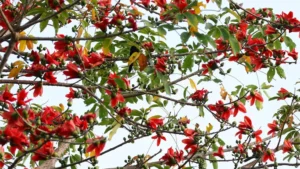
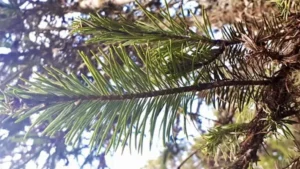
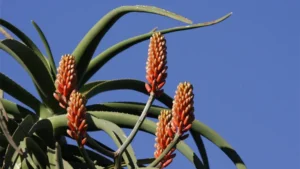
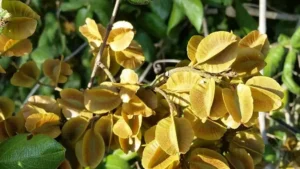
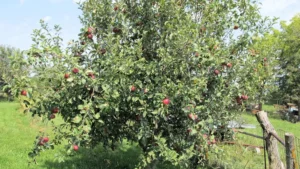
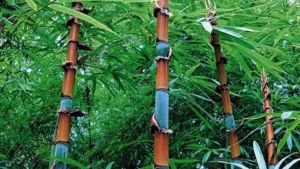
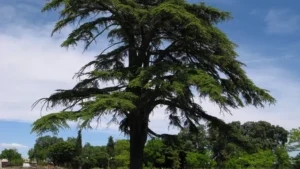

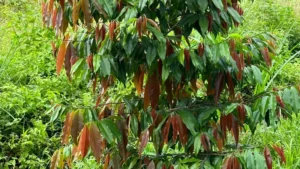
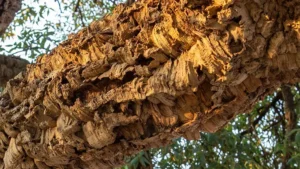

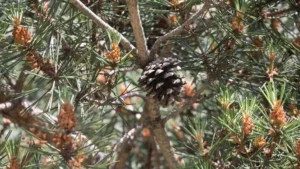
Leave your comment